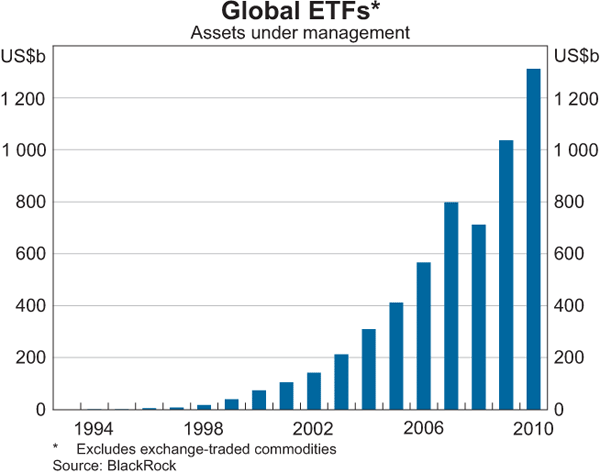Introduction to ExchangeTraded Funds (ETF)
Post on: 3 Апрель, 2015 No Comment

Many retail investors are interested in adding Forex to diversify their portfolio, but theyre not interested in setting up a separate trading account to trade spot Forex contracts or Forex futures contracts. Instead, they would rather be able to trade currencies in the same accounts that they use to trade stocks, mutual funds, and bonds. In most cases, if you have a 401(k) or an individual retirement account (IRA), you will be unable to trade spots or futures contracts. However, [. ]>
Many retail investors are interested in adding Forex to diversify their portfolio, but theyre not interested in setting up a separate trading account to trade spot Forex contracts or Forex futures contracts. Instead, they would rather be able to trade currencies in the same accounts that they use to trade stocks, mutual funds, and bonds. In most cases, if you have a 401(k) or an individual retirement account (IRA), you will be unable to trade spots or futures contracts. However, thanks to a burgeoning supply of various currency-related exchange-traded funds (ETFs), you can trade currencies right within your IRA or 401(k) accounts.
ETFs burst onto the scene a few years ago and have become increasingly popular with investors. ETFs are investment funds that are traded on stock markets. They are not mutual funds, yet they offer all the benefits of diversification that you would expect from a mutual fund. ETFs also enjoy all the benefits of liquidity that you have from trading individual shares.
As you get ready to start investing in currency-based ETFs, you need to answer the following five questions:
- Do you want to invest in one currency at a time or in multiple currencies?
- What assets does the ETF hold to gain exposure to the currency market?
- Does the ETF use leverage?
- What are the fees associated with the ETF?
- How are the profits you earn on your ETFs going to be taxed?
Once you know the answers to these questions, you will know whether the ETF you are looking at is suitable for you or not.
This may seem obvious, but the easiest way to look at the differences among ETFs is to look at a bunch of different ETFs. To that end, were going to be looking at currency ETFs from three different fund families: CurrencyShares, PowerShares, and WisdomTree. These are three of the dominant fund families in the currency ETF space at the time of this writing. Naturally, if the number of ETFs continues to grow as rapidly in the future as it has in the past, investors will be able to choose from many more ETFs in the coming years. But gaining an understanding of the differences in the ETFs in these fund families should give you the foundation you need to make intelligent investment decisions.














